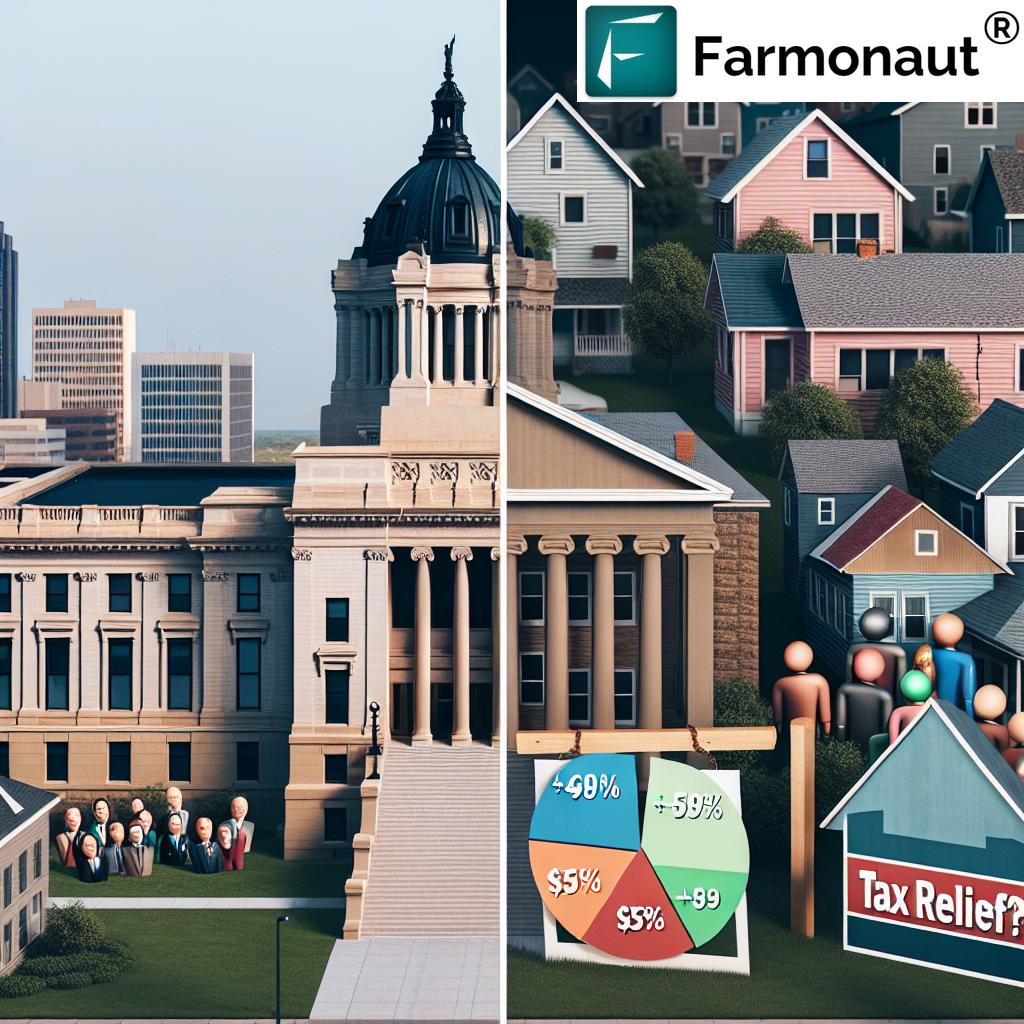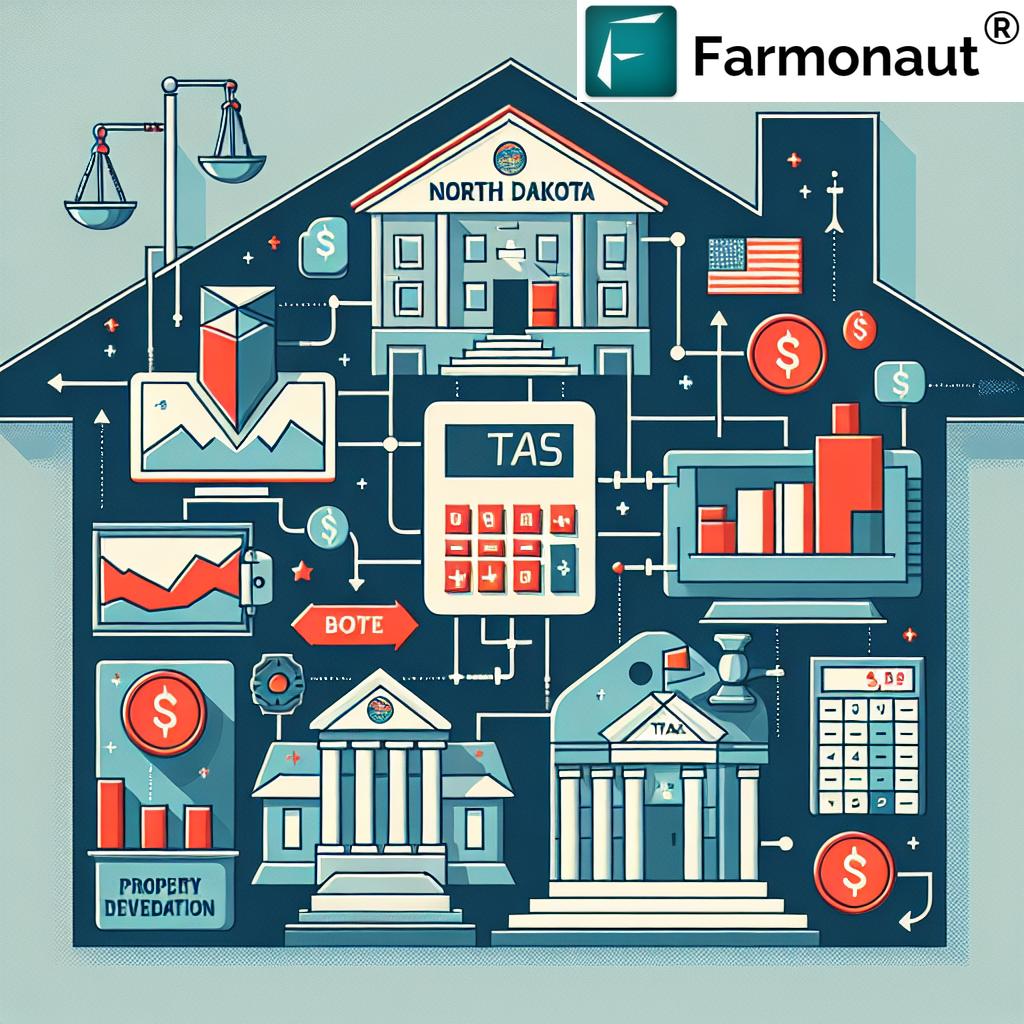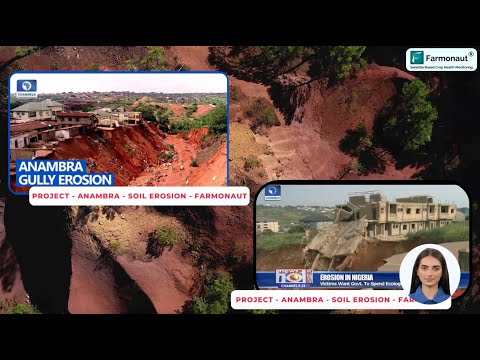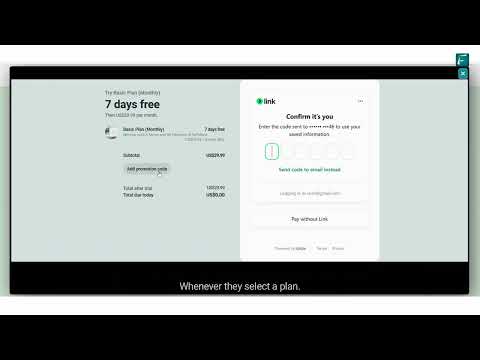North Dakota Property Tax Reform: Analyzing the Debate and Potential 2026 Ballot Measure
“North Dakota’s 2026 ballot may feature a property tax reform measure, potentially impacting millions in local government revenue.”
As we delve into the complex world of North Dakota’s property tax reform, we find ourselves at the center of a heated debate that could reshape the state’s fiscal landscape for years to come. The potential 2026 ballot measure looms large on the horizon, casting a long shadow over current legislative efforts and sparking intense discussions among lawmakers, homeowners, and local government officials alike.
In this comprehensive analysis, we’ll explore the nuances of the proposed reforms, the political forces at play, and the potential consequences for North Dakotans. From the halls of Bismarck to the homes of Minot, this issue touches every corner of our state, and its resolution will have far-reaching implications for our communities.
The Current Landscape of Property Taxes in North Dakota
Before we dive into the proposed reforms, it’s crucial to understand the current property tax system in North Dakota. Property taxes are a primary source of funding for local governments, supporting essential services such as schools, road maintenance, and public safety. However, the burden on homeowners has been a point of contention for years, with many arguing that the system is outdated and in need of significant overhaul.
The existing property tax structure in North Dakota is based on the assessed value of real estate, with rates varying by locality. While this system has provided a stable revenue stream for local governments, it has also led to concerns about affordability, especially in areas where property values have risen sharply.
The Push for Property Tax Relief: A Political Imperative
The call for property tax relief has been growing louder in recent years, with many North Dakotans feeling the pinch of rising tax bills. This groundswell of public opinion has not gone unnoticed by politicians, who recognize the potency of this issue at the ballot box. As a result, property tax reform has become a top priority for lawmakers in Bismarck, with various proposals being put forward to address voter concerns.
One of the most significant developments in this ongoing debate has been the proposal championed by Governor Kelly Armstrong and Representative Mike Nathe. Their plan, which initially offered a substantial property tax credit for primary residences, was designed to provide immediate relief to homeowners while also implementing measures to control local government spending growth.
The Armstrong-Nathe Plan: A Bold Vision for Tax Relief
At its core, the Armstrong-Nathe plan sought to deliver meaningful property tax relief through a state-funded credit system. The original proposal included:
- A $1,550 tax credit for every primary residence in North Dakota
- A funding formula designed to grow the credit over time
- A flexible 3% cap on local spending growth
This ambitious plan was hailed by many as a significant step towards addressing the property tax burden faced by North Dakota homeowners. By providing a substantial credit that would increase over time, the proposal aimed to eventually cover the majority of property tax bills for primary residences across the state.
Moreover, the inclusion of a spending cap for local governments was seen as a crucial measure to ensure long-term property tax relief. By limiting the growth of local government expenditures, the plan sought to address one of the root causes of rising property taxes.

Senate Amendments: A Controversial Turn
“Recent amendments to North Dakota’s property tax credit plan for primary residences have sparked debate among state legislators.”
Despite the initial enthusiasm for the Armstrong-Nathe plan, recent developments in the state Senate have thrown a wrench into the works. Majority Leader David Hogue, in a move that has puzzled many political observers, introduced amendments that significantly altered the original proposal. These changes include:
- Reducing the tax credit amount from $1,550 to $1,250
- Implementing a cap on the credit, limiting it to 75% of a homeowner’s tax bill
- Expanding the relief to include landlords and owners of commercial and agricultural property
These amendments have sparked intense debate within the legislature and among the public. Critics argue that the changes dilute the effectiveness of the tax relief, potentially undermining the primary goal of providing significant relief to homeowners.
The Political Calculus: Balancing Interests and Risks
The debate over these amendments highlights the complex political calculus at play in North Dakota’s property tax reform efforts. On one side, there’s a strong push to provide substantial relief to homeowners, who make up a significant voting bloc and have been vocal about their desire for tax reform. On the other hand, there are concerns about fairness and the potential impact on local government revenues.
Majority Leader Hogue’s amendments appear to be an attempt to spread the benefits of tax relief more broadly, including to landlords and commercial property owners. While this approach may seem equitable on the surface, it risks alienating homeowners who were expecting more significant relief under the original plan.
The Specter of Radical Measures: Abolishing Property Taxes
As the debate over property tax reform continues, there’s a growing concern that diluting the effectiveness of the proposed relief could fuel support for more radical measures. The idea of abolishing property taxes entirely, while extreme, has gained traction among a vocal minority of North Dakotans who view property taxes as fundamentally unjust.
This sentiment was evident in the last election cycle, where a ballot measure to eliminate property taxes, led by former state lawmaker Rick Becker, gained significant attention. While ultimately unsuccessful, the campaign highlighted the depth of frustration among some voters regarding the current property tax system.
The possibility of another such ballot measure in 2026 looms large over the current legislative debate. Many lawmakers fear that if the current reform efforts are perceived as inadequate, it could pave the way for more radical proposals to gain traction.
Local Government Concerns: Balancing Relief and Revenue
While much of the debate has focused on homeowner relief, it’s crucial to consider the perspective of local governments, which rely heavily on property tax revenue to fund essential services. Any significant reduction in property tax collections could have far-reaching consequences for schools, public safety, and infrastructure maintenance.
The proposed 3% cap on local spending growth in the original Armstrong-Nathe plan was designed to address these concerns by gradually limiting expenditure increases. However, some local officials worry that this cap, combined with substantial tax credits, could lead to budget shortfalls and reduced services.
As lawmakers grapple with these competing interests, finding a solution that provides meaningful relief to homeowners while ensuring the fiscal stability of local governments remains a significant challenge.

The Role of Technology in Property Assessment and Management
As North Dakota grapples with property tax reform, it’s worth considering how technology could play a role in modernizing the system and improving efficiency. Advanced tools for property assessment and management could help streamline processes and potentially reduce costs for local governments.
For instance, carbon footprinting technology could be utilized to assess the environmental impact of properties, potentially influencing tax assessments or providing incentives for sustainable practices. This approach could align property tax policies with broader environmental goals while offering a new perspective on property valuation.
Similarly, fleet management solutions could help local governments optimize their vehicle usage and reduce operational costs, potentially offsetting some of the revenue losses from property tax relief measures. By improving efficiency in public services, such technologies could help balance the need for tax relief with the maintenance of essential government functions.
The Impact on Agriculture: A Key Consideration
In a state where agriculture plays a crucial role in the economy, any changes to property tax laws must carefully consider their impact on farmers and ranchers. The current debate has raised questions about how agricultural land will be treated under various reform proposals.
Some argue that providing relief to agricultural property owners is essential for maintaining the viability of North Dakota’s farming communities. Others contend that focusing relief on primary residences is the most effective way to address the concerns of the majority of voters.
As lawmakers navigate this complex issue, they may want to consider innovative approaches to agricultural property assessment. For example, advanced crop and plantation advisory systems could provide more accurate and up-to-date information on land productivity and value, potentially leading to fairer assessments for agricultural properties.
The Potential for a 2026 Ballot Measure
As we look ahead to 2026, the possibility of another property tax ballot measure seems increasingly likely. The outcome of the current legislative efforts will play a crucial role in shaping public opinion and determining the nature of any future ballot initiatives.
If the legislature can pass a reform package that provides substantial and visible relief to homeowners, it could dampen enthusiasm for more radical measures. However, if the final legislation is perceived as inadequate or overly watered down, it may fuel support for a ballot measure that proposes more dramatic changes to the property tax system.
The potential for such a measure underscores the importance of getting the current reform efforts right. Lawmakers must carefully balance the need for meaningful relief with the practicalities of maintaining local government services and avoiding unintended consequences.
Comparative Analysis of North Dakota Property Tax Reform Proposals
| Tax System Type | Estimated Homeowner Relief (%) | Impact on Local Government Revenue | Implementation Timeline | Primary Beneficiaries | Potential Challenges |
|---|---|---|---|---|---|
| Current Property Tax System | 0% | Stable | N/A | Local Governments | Rising burden on homeowners |
| Proposed State Property Tax Credit | 30-50% | Moderate Decrease | 1-2 years | Primary Homeowners | Funding sustainability |
| Recent Amendments to Proposal | 20-30% | Slight Decrease | 1-2 years | Mixed (Homeowners, Landlords, Commercial) | Reduced effectiveness for homeowners |
| Complete Property Tax Abolition | 100% | Severe Decrease | 3-5 years | All Property Owners | Local government funding crisis |
The Path Forward: Balancing Relief and Responsibility
As North Dakota lawmakers continue to debate property tax reform, they face the challenge of crafting a solution that addresses multiple competing interests. The ideal outcome would provide significant relief to homeowners while maintaining the fiscal health of local governments and avoiding unintended consequences for other stakeholders.
To achieve this balance, legislators may need to consider a multi-faceted approach that combines immediate relief measures with longer-term structural reforms. This could include:
- Implementing a substantial property tax credit for primary residences
- Gradually phasing in spending caps for local governments
- Exploring alternative revenue sources to offset potential shortfalls
- Investing in technology to improve property assessment and tax administration efficiency
- Developing targeted relief programs for specific groups, such as low-income homeowners or agricultural property owners
By taking a comprehensive approach, North Dakota has the opportunity to create a property tax system that is fair, sustainable, and responsive to the needs of its citizens.
Conclusion: A Critical Juncture for North Dakota
The debate over property tax reform in North Dakota represents a critical juncture for the state. The decisions made in the coming months and years will have far-reaching consequences for homeowners, local governments, and the state’s overall fiscal health.
As we approach the possibility of a 2026 ballot measure, it’s crucial that lawmakers, stakeholders, and citizens engage in thoughtful, informed discussions about the future of property taxes in our state. By carefully considering the various proposals and their potential impacts, we can work towards a solution that provides meaningful relief while preserving the essential services that our communities depend on.
The path to property tax reform may be complex and challenging, but with careful consideration and a commitment to balancing diverse interests, North Dakota has the opportunity to create a tax system that serves its citizens well for generations to come.
FAQ Section
Q: What is the main goal of the proposed property tax reform in North Dakota?
A: The primary aim is to provide significant property tax relief to homeowners while maintaining essential local government services and controlling spending growth.
Q: How would the proposed state property tax credit work?
A: The original plan proposed a $1,550 credit for primary residences, funded by the state, with a mechanism for the credit to grow over time.
Q: What changes were made in the Senate amendments?
A: The Senate amendments reduced the credit to $1,250, capped it at 75% of the tax bill, and expanded relief to include landlords and commercial property owners.
Q: Why are some lawmakers concerned about these amendments?
A: Critics argue that the changes dilute the effectiveness of the relief for homeowners and could fuel support for more radical measures like abolishing property taxes entirely.
Q: What is the likelihood of a property tax ballot measure in 2026?
A: Given the ongoing debate and public interest in the issue, a 2026 ballot measure seems increasingly likely, especially if current reform efforts are perceived as inadequate.
Q: How might technology play a role in property tax reform?
A: Advanced technologies could improve property assessment accuracy, enhance local government efficiency, and potentially provide new ways to evaluate property values and tax burdens.
Q: What are the main challenges in implementing property tax reform?
A: Key challenges include balancing homeowner relief with local government funding needs, ensuring fairness across different types of property owners, and avoiding unintended consequences that could destabilize the tax system.
As we continue to monitor the developments in North Dakota’s property tax reform efforts, it’s clear that this issue will remain at the forefront of political discourse in the state for the foreseeable future. The outcome of this debate will have significant implications for homeowners, local governments, and the overall fiscal health of North Dakota.
For those interested in staying informed about the latest developments in agricultural technology and its potential impact on property valuation and management, consider exploring Farmonaut’s innovative solutions. Our platform offers cutting-edge tools for large-scale farm management and crop loan and insurance support, which could provide valuable insights for policymakers and property owners alike.
Earn With Farmonaut: Affiliate Program
Earn 20% recurring commission with Farmonaut’s affiliate program by sharing your promo code and helping farmers save 10%. Onboard 10 Elite farmers monthly to earn a minimum of $148,000 annually—start now and grow your income!
Stay tuned for further updates on North Dakota’s property tax reform journey, and remember that informed engagement is key to shaping effective policy for our state’s future.







